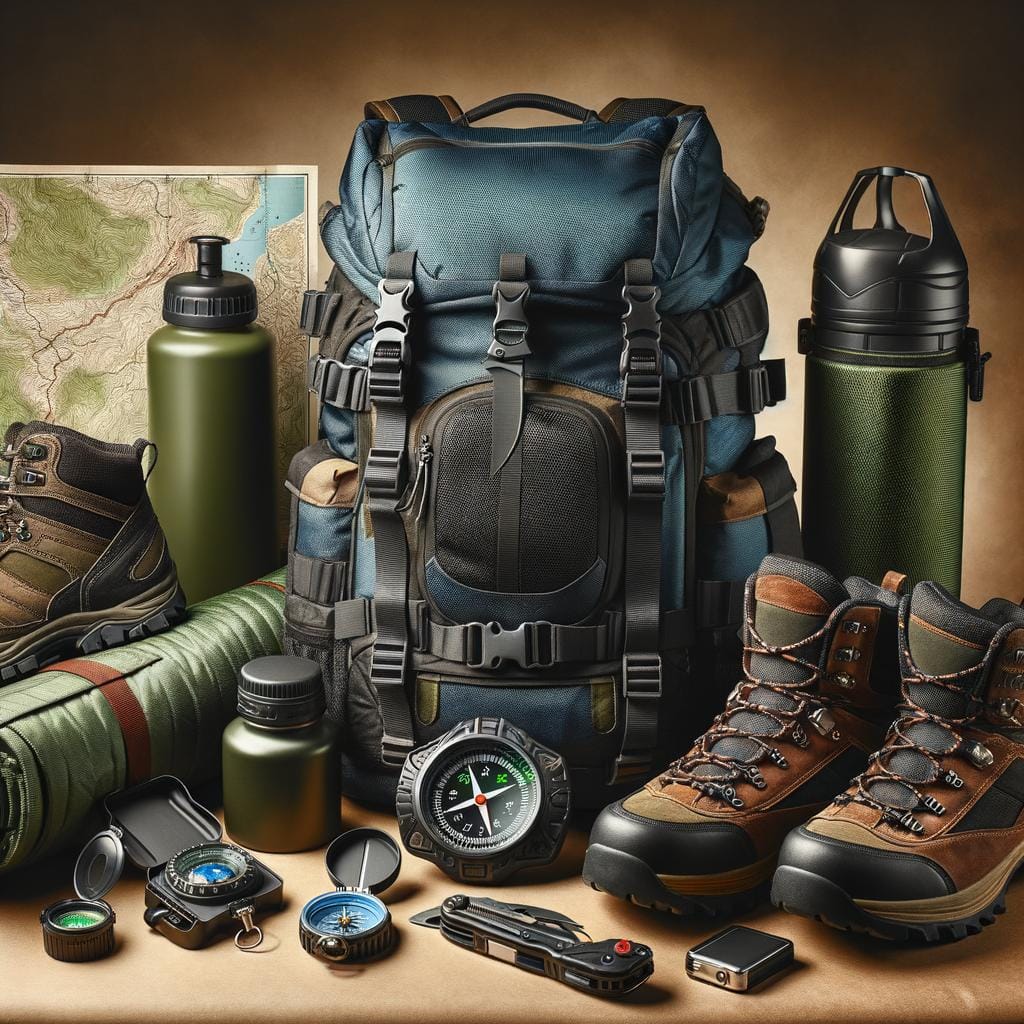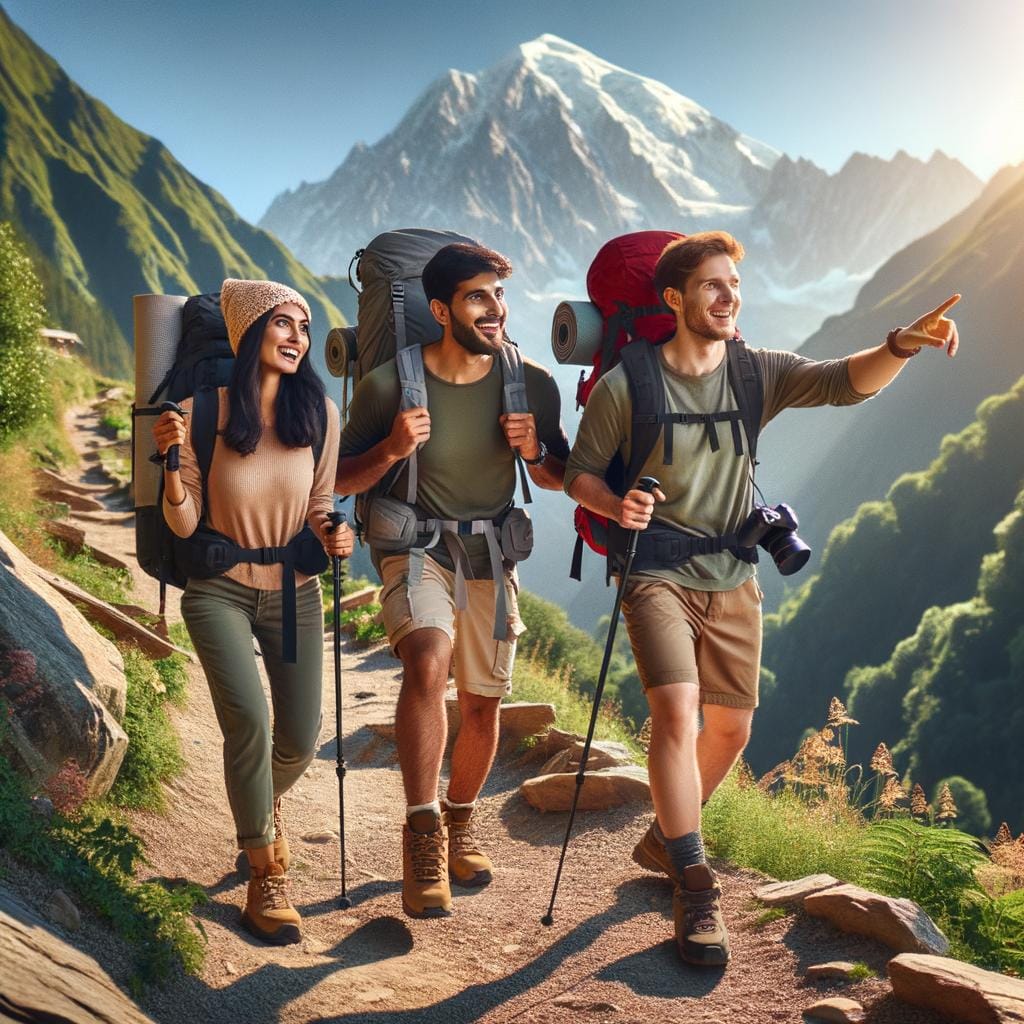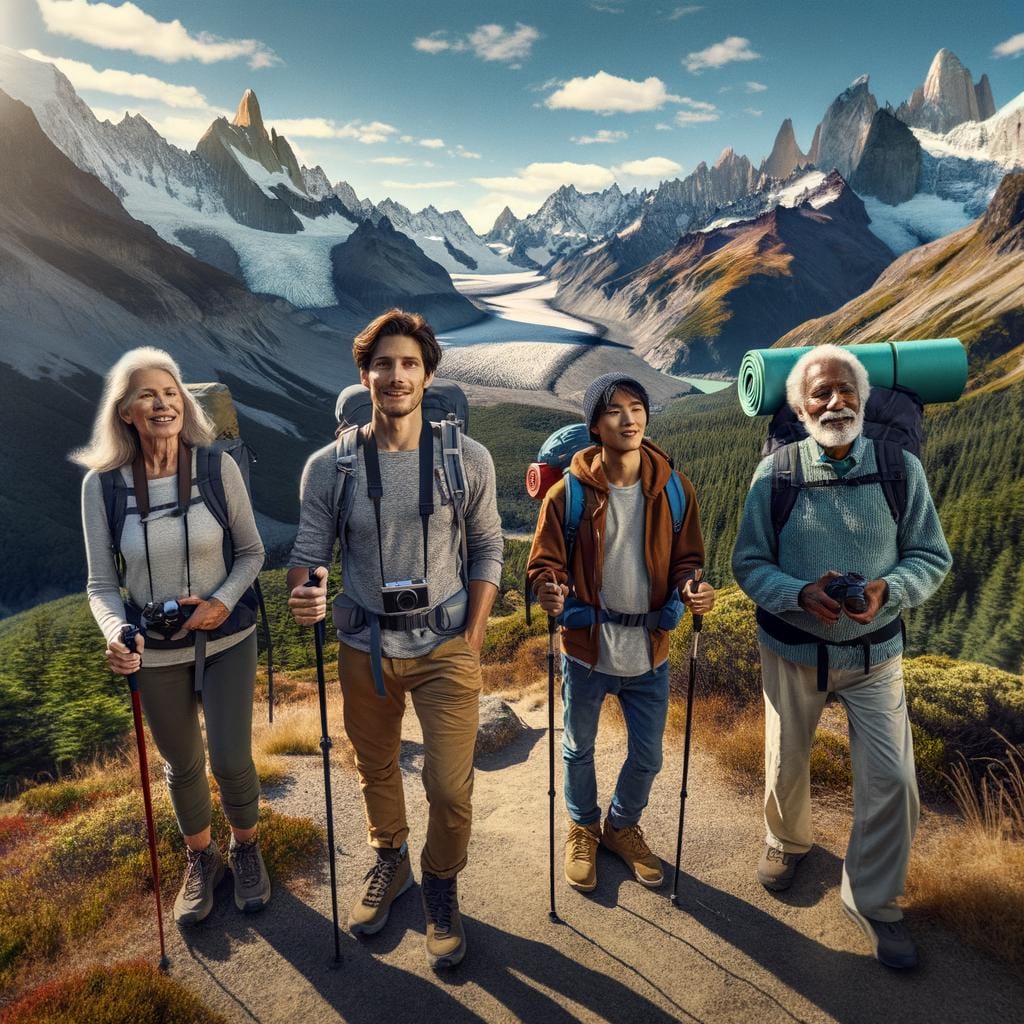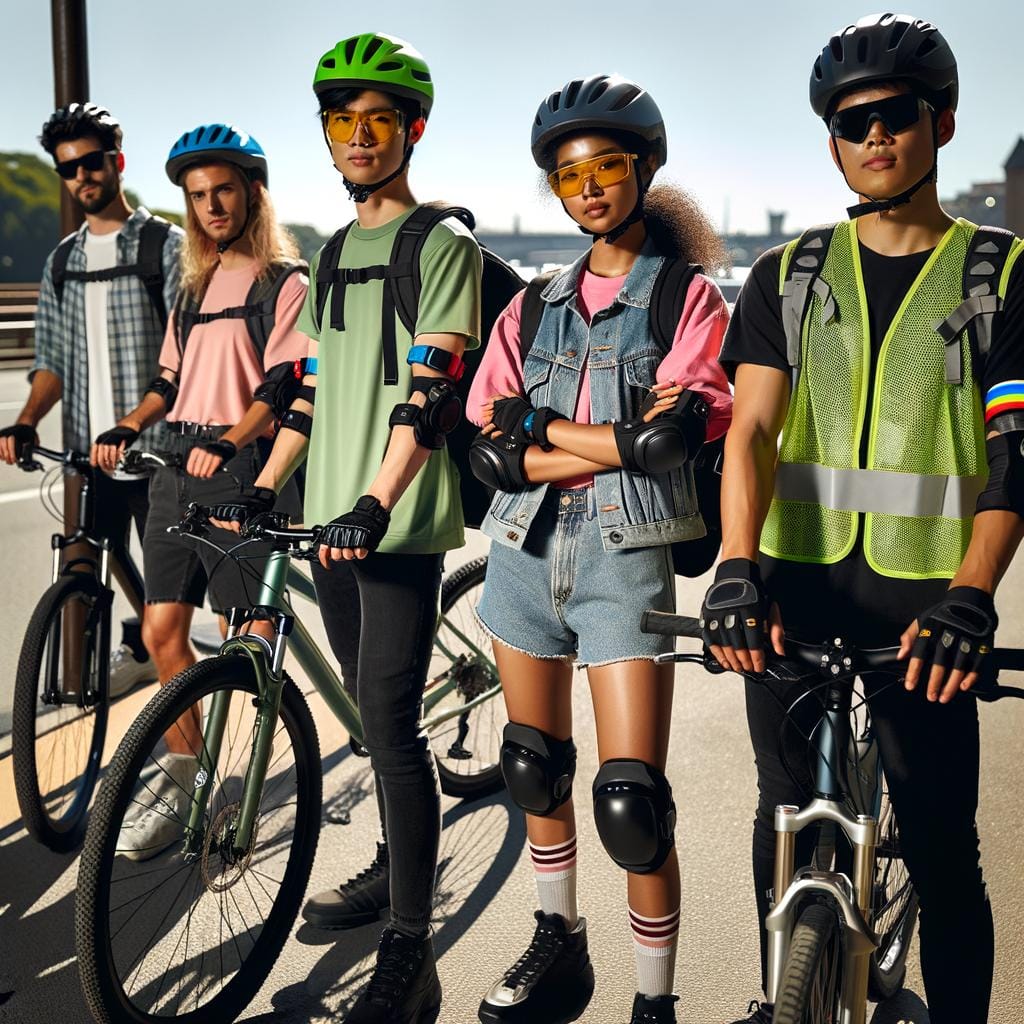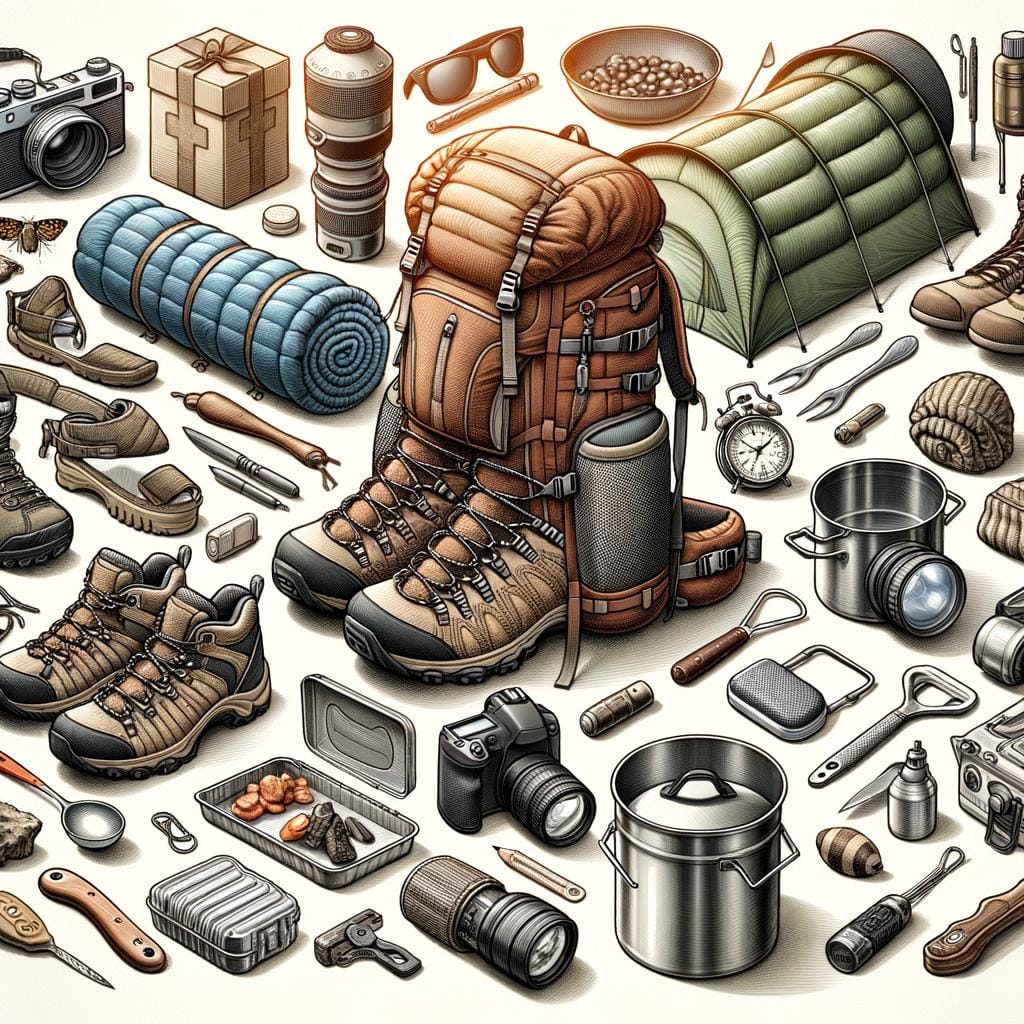Embarking on a trekking adventure can be an exhilarating experience, allowing you to connect with nature and challenge yourself physically and mentally. However, before setting off on your journey, it is essential to be well-prepared with the right trekking equipment. From proper footwear to navigation tools, each piece of gear plays a crucial role in ensuring a safe and enjoyable trekking experience.
One of the most important aspects of preparing for a trekking trip is selecting the appropriate trekking equipment, which includes essential items like trekking boots, clothing, camping gear, navigation tools, backpacks, water bottles, first aid kits, and survival gear. For beginners venturing into the world of trekking, understanding what gear is necessary and how to choose the right options can make all the difference in their outdoor experience.
In this comprehensive guide to essential trekking equipment for beginners, we will delve into the importance of each piece of gear and provide valuable insights on how to select the best options suited for various trekking adventures. Whether you are planning a day hike or a multi-day expedition into the wilderness, having the right equipment can enhance your safety, comfort, and overall enjoyment during your outdoor escapades.
So let’s explore the must-have gear that every novice trekker should consider investing in before hitting the trails.
Choosing the Right Trekking Boots
When it comes to trekking, one of the most crucial pieces of equipment is your choice of trekking boots. The right pair can make or break your hiking experience, so it’s important to invest in a quality and well-fitting pair that suits your needs. Here are some tips for choosing the right trekking boots:
- Consider the terrain: Before purchasing trekking boots, think about the type of terrain you will be hiking on. Different boots are designed for different environments, such as rocky trails, muddy paths, or snowy conditions.
- Fit is key: Make sure to try on several pairs of trekking boots and walk around in them to ensure a good fit. Your toes should have room to wiggle, but your heels should not slip up and down. Remember that your feet may swell during long hikes, so consider buying boots half a size larger than your usual size.
- Choose the right material: Trekking boots come in various materials such as leather and synthetic fabrics. Leather boots are durable and provide excellent support, while synthetic boots are lightweight and quick-drying. Consider what features are most important to you before making a decision.
When looking for the perfect pair of trekking boots, consider brands like Salomon, Merrell, or Keen for high-quality options that will last through many adventures. By investing in a good pair of trekking boots that suit your needs and preferences, you’ll ensure a comfortable and enjoyable hiking experience every time.
The Importance of Proper Clothing for Trekking Adventures
When embarking on a trekking adventure, one of the most crucial aspects to consider is the clothing you wear. The right clothing can make or break your journey, as it plays a significant role in keeping you comfortable and protected during varying weather conditions. Proper trekking clothing should provide adequate protection from the elements, ensure breathability to prevent overheating, and offer flexibility for unrestricted movement while traversing different terrains.
Layering for Success
One essential tip to keep in mind when selecting clothing for trekking is the importance of layering. Layering allows you to easily adjust your body temperature by adding or removing layers as needed. The base layer should be moisture-wicking to keep sweat away from your skin, while the middle layer provides insulation to retain body heat. The outer layer should be waterproof and windproof to shield you from rain, snow, and harsh winds.
Choosing the Right Fabric
Selecting the appropriate fabric for your trekking apparel is vital for comfort and performance. Opt for materials such as merino wool, synthetic blends like polyester, or nylon for moisture-wicking properties and quick drying capabilities. Avoid cotton clothing as it retains moisture and takes longer to dry, increasing the risk of hypothermia in cold conditions.
Additionally, choose fabrics with UPF (Ultraviolet Protection Factor) for sun protection during sunny treks. Remember that comfort and functionality should take precedence over style when it comes to trekking clothing.
When preparing for a trekking adventure, always consider the climate and terrain you will encounter to determine the most suitable clothing options. Investing in high-quality trekking apparel may require additional upfront costs but will ultimately enhance your experience on the trail by keeping you comfortable, protected, and ready for whatever nature throws your way. Don’t overlook the significance of proper clothing in your trekking equipment arsenal-it can truly make a difference in your outdoor escapades.
Must-Have Camping Gear for Overnight Treks
When embarking on overnight treks, having the right camping gear is essential to ensure a comfortable and safe experience in the great outdoors. Here are some must-have items to consider adding to your trekking equipment list:
- Tent: A reliable and lightweight tent is crucial for providing shelter and protection from the elements during overnight treks. Look for a tent that is easy to set up, weather-resistant, and spacious enough to accommodate you and your gear.
- Sleeping Bag: Invest in a high-quality sleeping bag that suits the temperature range of your destination. Consider factors such as insulation type, weight, and packability when choosing the right sleeping bag for your needs.
- Sleeping Pad: To enhance comfort and insulation while sleeping outdoors, a sleeping pad is essential. Look for options that are lightweight, durable, and provide adequate cushioning for a restful night’s sleep.
In addition to these basic camping essentials, there are other gear items that can enhance your overnight trekking experience:
- Camp Stove: For cooking meals and boiling water on the trail, a portable camp stove is a convenient addition to your camping gear. Opt for a lightweight stove with fuel efficiency features for efficient cooking during outdoor adventures.
- Headlamp or Flashlight: Illumination is key when navigating around campsite or trails after dark. A reliable headlamp or flashlight will provide hands-free lighting for nighttime activities such as cooking, reading maps, or going to the bathroom.
- Multi-Tool: A multi-tool can come in handy for various tasks during camping trips, including gear repairs, food preparation, or emergency situations. Choose a compact and durable multi-tool with essential functions like knives, pliers, screwdrivers, and bottle openers.
By investing in quality camping gear tailored to your specific needs and preferences, you can ensure a more enjoyable overnight trekking experience while staying prepared for any outdoor challenges that may arise. Remember to pack efficiently and organize your equipment properly before hitting the trail to minimize weight load and maximize comfort during your adventure.
Top Navigation Tools for Safe Trekking
When embarking on a trekking adventure, especially in unfamiliar terrain, having reliable navigation tools is essential for a safe journey. One of the most important navigation tools to consider is a GPS device or a smartphone with a GPS app. These devices can provide real-time location tracking, mapping services, and even emergency communication capabilities. It’s crucial to ensure that these devices are fully charged and have offline maps downloaded to avoid connectivity issues in remote areas.
In addition to GPS devices, it’s always wise to carry a traditional compass and a detailed topographic map of the area you’ll be trekking through. While technology can be helpful, batteries can die or signals can be lost. A compass paired with a map can serve as reliable backups for navigation. Learning how to read a map and use a compass is a valuable skill that all trekkers should acquire before heading out into the wilderness.
Another useful navigation tool to consider is an altimeter watch. This type of watch not only tells time but also provides altitude information, making it easier to track progress along your route. Some altimeter watches even come equipped with barometric sensors that can predict changes in weather conditions, allowing trekkers to prepare accordingly. Invest in high-quality navigation tools and take the time to familiarize yourself with how they work before setting off on your trekking adventure.
| Navigation Tool | Benefits |
|---|---|
| GPS Device/Smartphone with GPS App | Real-time location tracking, mapping services, emergency communication capabilities. |
| Traditional Compass and Topographic Map | Reliable backup for navigation in case of technology failures. |
| Altimeter Watch | Provides altitude information, tracks progress, predicts weather changes. |
Lightweight and Functional Backpacks for Long Hikes
When embarking on long hikes, one of the most crucial pieces of trekking equipment you’ll need is a reliable backpack. Whether you’re heading out for a day trip or a multi-day trek, choosing the right backpack can make a significant difference in your comfort and overall hiking experience. Here are some key considerations to keep in mind when selecting a lightweight and functional backpack for your long hikes.
Capacity and Size
The first thing to consider when choosing a backpack for long hikes is the capacity and size. For day hikes, a smaller backpack with a capacity of around 20-30 liters may be sufficient to carry essentials like water, snacks, extra clothing layers, and basic first aid supplies. For multi-day treks, opt for a larger pack with a capacity of 50 liters or more to accommodate additional gear such as a sleeping bag, tent, cooking supplies, and extra clothing.
Comfort and Support
Comfort is key when it comes to selecting a backpack for long hikes. Look for packs that feature padded shoulder straps, adjustable hip belts, and back ventilation systems to help distribute weight evenly across your body and reduce strain on your shoulders and back. Additionally, choose a pack with adjustable straps and multiple points of adjustment so you can customize the fit to your body shape for maximum comfort on the trail.
Features and Organization
Consider the features and organization options available in different backpacks to meet your specific needs during long hikes. Look for packs with external pockets for easy access to items like water bottles or snacks, as well as internal compartments or sleeves to keep gear organized.
Some backpacks also come with attachment points for trekking poles or ice axes, which can be useful for certain types of terrain. Ultimately, choose a backpack that offers the right balance of weight distribution, comfort features, and organization options to enhance your hiking experience on long treks.
How to Stay Hydrated on the Trail
Proper hydration is essential for any trekking adventure, as staying hydrated helps maintain energy levels, endurance, and overall well-being while on the trail. When it comes to choosing the right equipment to stay hydrated during your trek, you have two main options: water bottles and hydration packs.
Water bottles are a classic choice for carrying water on the trail. They come in various sizes and materials, from lightweight plastic to durable stainless steel. Look for water bottles with a secure cap or lid to prevent leakage inside your backpack. Some water bottles also feature insulation to keep your drinks cool longer, which can be especially beneficial during hot weather hikes.
On the other hand, hydration packs are a convenient hands-free option for staying hydrated while trekking. These packs typically consist of a reservoir (or bladder) that holds a large volume of water and a tube with a bite valve for easy sipping on the go. Hydration packs come in different sizes and styles, so choose one that fits comfortably on your back and provides easy access to the water reservoir while walking.
To ensure you stay adequately hydrated during your trek, consider factors such as the duration of your hike, weather conditions, and personal hydration needs when choosing between water bottles and hydration packs. Whichever option you select, remember to drink regularly throughout your hike to avoid dehydration and enjoy a safe and enjoyable trekking experience. Invest in high-quality trekking equipment like reliable hydration gear to make the most of your outdoor adventures.
Emergency Essentials
When embarking on a trekking adventure, being prepared for emergencies is crucial to ensure your safety and well-being. One of the most important aspects of emergency preparedness is having the right first aid kit and survival gear.
A well-equipped first aid kit can help you address minor injuries and ailments while hiking, allowing you to continue your journey with minimal disruption. Additionally, having essential survival gear on hand can make a significant difference in critical situations, such as getting lost or facing unexpected weather conditions.
A basic first aid kit for trekking should include essentials such as adhesive bandages, gauze pads, antiseptic wipes, blister treatment products, pain relievers, tweezers, and medical tape. It’s also advisable to include personal medications and any specific items relevant to your medical needs.
When choosing a first aid kit for trekking, opt for a lightweight and compact design that can easily fit into your backpack without adding excessive bulk. Consider supplementing your kit with additional items like a CPR mask, ace bandages, burn cream, or insect bite relief products based on the terrain and duration of your trek.
In addition to a comprehensive first aid kit, carrying essential survival gear is vital when venturing into remote wilderness areas. Survival gear may include items like a multi-tool knife, emergency blanket or bivvy sack for warmth, fire starters or waterproof matches, signaling devices (whistle or mirror), extra food rations (energy bars), paracord or rope for shelter building, and a compass or GPS device for navigation.
Having these survival tools readily available in your pack can help you handle unforeseen circumstances effectively and increase your chances of staying safe during emergencies in the outdoors.
| First Aid Essentials | Survival Gear |
|---|---|
| Adhesive bandages | Multi-tool knife |
| Gauze pads | Emergency blanket |
| Pain relievers | Fire starters |
How to Pack and Organize Your Trekking Equipment for Efficiency
When embarking on a trekking adventure, one of the crucial aspects to consider is how to efficiently pack and organize your trekking equipment. Proper packing not only ensures that you have everything you need for your journey but also helps in distributing weight evenly for better balance and comfort on the trail.
To start, it is essential to categorize your gear into different sections such as clothing, camping equipment, navigation tools, hydration supplies, and emergency essentials. This step will facilitate easier access to specific items when needed and prevent rummaging through your backpack during the trek. Consider utilizing packing cubes or stuff sacks to keep similar items together and create a more organized pack.
When packing clothing for a trekking trip, opt for moisture-wicking base layers, insulating mid-layers, and waterproof outer shells. Roll your clothes instead of folding them to save space in your backpack. Additionally, make sure to include extra layers for unexpected weather changes. For camping gear, compact items like lightweight tents, sleeping bags, and portable stoves are ideal choices to minimize bulk.
Don’t forget about the importance of distributing weight evenly in your backpack. Heavier items like water bottles and cooking supplies should be placed closer to your back while lighter gear can go towards the top or outside pockets. Keep frequently used items like snacks or a water bottle within easy reach. By carefully organizing and packing your trekking equipment before hitting the trail, you can ensure a more comfortable and efficient outdoor experience.
Budget-Friendly Trekking Equipment Options for Thrifty Adventurers
When embarking on trekking adventures, having the right equipment is crucial to ensure a safe and enjoyable experience. While top-of-the-line gear can be tempting, it’s important to remember that budget-friendly options are available for thrifty adventurers who still want quality equipment. From trekking boots to backpacks, there are ways to find affordable gear without compromising on performance.
One way to save money on trekking equipment is by looking for sales or discounts at outdoor retailers. Many stores offer end-of-season sales or clearance events where you can score great deals on high-quality gear. Additionally, consider purchasing gently used equipment from secondhand stores or online marketplaces. You may be able to find lightly used items at a fraction of the cost of brand new ones.
Another budget-friendly option is to prioritize essential items and invest in those first before splurging on additional gear. Focus on key pieces like sturdy trekking boots, proper clothing layers, and reliable navigation tools. These essentials will ensure your comfort and safety on the trail without breaking the bank.
Remember that quality does not always have to come with a hefty price tag, as there are many affordable options that perform just as well as their more expensive counterparts. By being strategic and resourceful in your purchases, you can build a collection of reliable trekking equipment without overspending.
Frequently Asked Questions
What Is the Equipment for Trekking?
The equipment for trekking typically includes a sturdy backpack, hiking boots, moisture-wicking clothing, a tent, sleeping bag, cooking gear, water purifier, first aid kit, navigation tools like a map and compass, and appropriate protection against the elements.
What Is the Difference Between Hiking and Trekking Equipment?
The main difference between hiking and trekking equipment lies in the intensity and duration of the activity. Hiking equipment tends to be lighter and more basic since it is usually for short trips on well-defined trails. Trekking requires more specialized gear designed for longer journeys in remote areas with varying terrains and weather conditions.
What Is the Basic Equipment for Hiking?
The basic equipment for hiking includes comfortable footwear (like hiking boots or shoes), appropriate clothing for the weather conditions (layers are key), a backpack to carry essentials like water, snacks, and a first aid kit. Additional items can include a map or GPS device, sunscreen, insect repellent, and a hat for sun protection.
It’s important to always pack out what you pack in to leave no trace behind on the trail.

An avid outdoor enthusiast, writer, and environmental advocate who has spent over two decades exploring the world’s most breathtaking landscapes. With a background in environmental science and a passion for adventure, Frances combines her love for nature with her talent for storytelling to inspire others to embark on their own outdoor journeys.

